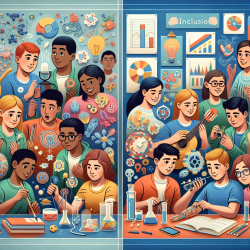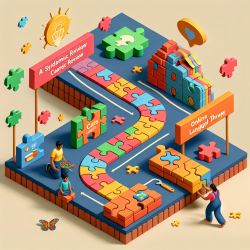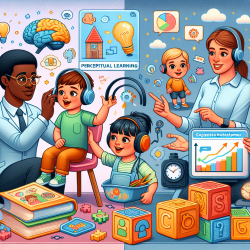Introduction
Adolescents on the autism spectrum often face challenges in social participation within inclusive education settings. Traditional approaches focusing on social skills training may not always yield the desired outcomes, as they can feel inauthentic and pressured. Recent research, however, suggests that inclusive, interest-based school clubs can foster better social participation among these students. This blog explores how educators and practitioners can implement the findings from the research article titled, “A different environment for success:” a mixed-methods exploration of social participation outcomes among adolescents on the autism spectrum in an inclusive, interest-based school club, to enhance their practices and support students on the autism spectrum.
Understanding the Research
The study conducted by Chen et al. investigated the social participation outcomes of adolescents on the autism spectrum in an inclusive Maker Club at three public schools. Using a mixed-methods approach, the research examined both quantitative and qualitative data to assess the impact of interest-based activities on social engagement. The findings revealed that students on the spectrum showed increased social response rates and reciprocity over time, similar to their non-autistic peers. Teachers reported enhanced social interactions compared to general classroom settings, attributing these positive outcomes to activities that encouraged shared interests and a flexible social environment.
Implementing Interest-Based School Clubs
For practitioners looking to replicate these successful outcomes, consider the following strategies:
- Create Interest-Driven Activities: Develop school clubs that focus on shared interests among students. Activities should be designed to naturally encourage peer interaction and collaboration.
- Foster a Flexible Environment: Allow for a relaxed and adaptable social setting where students can engage without the pressure of formal instruction. This can help students feel more comfortable and open to interaction.
- Encourage Authentic Peer Interactions: Minimize adult intervention to allow students to initiate and sustain their interactions. This can lead to more genuine relationships and social engagement.
- Provide Supportive Resources: Ensure that students have access to the necessary tools and materials to explore their interests and engage in meaningful projects.
Encouraging Further Research
While the study offers valuable insights, further research is needed to explore the long-term effects of interest-based school clubs on social participation. Practitioners are encouraged to conduct their own studies and share findings with the broader educational community. By doing so, we can continue to refine and improve strategies for supporting students on the autism spectrum in inclusive settings.
Conclusion
Inclusive, interest-based school clubs offer a promising approach to enhancing social participation among adolescents on the autism spectrum. By focusing on shared interests and providing a supportive environment, educators can help these students build meaningful peer relationships and improve their overall well-being. To learn more about the research and its implications, you can read the original research paper by following this link: “A different environment for success:” a mixed-methods exploration of social participation outcomes among adolescents on the autism spectrum in an inclusive, interest-based school club.










